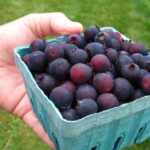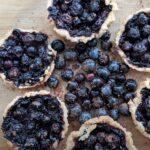Many berry enthusiasts, gardeners, and health-conscious individuals have found themselves pondering: “Are Saskatoon berries poisonous?” A simple question, yet it unveils the complex and fascinating world of berries. This blog post aims to answer this question and much more, delving into the rich tapestry of berry biology, human health implications, and captivating lore surrounding these delightful fruits.
This blog post will also explore the proper identification, benefits, and potential risks associated with Saskatoon berries. We will cover everything from their origins to their nutritional benefits and potential health concerns. Let’s embark on this berry fascinating journey.
A Brief Overview
First, let’s familiarize ourselves with Saskatoon berries. Native to North America, Saskatoon berries, scientifically known as Amelanchier alnifolia, are small, sweet fruits resembling blueberries. They belong to the Rosaceae family, often referred to as the rose family, and have played a crucial role in the diets and lifestyles of indigenous people for centuries.
Also known as Juneberries, serviceberries, or shadbush, these fruits flourish in the wild across the northwestern region of North America. They display a brilliant purple-blue color when ripe and bear a slightly sweet, nutty flavor, distinguishing them from their blueberry counterparts.
Are Saskatoon Berries Poisonous?
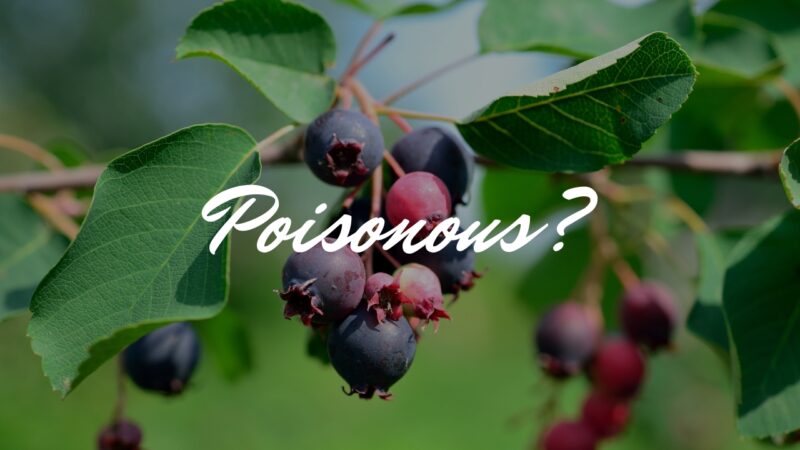
Let’s get straight to the crux of the matter. Are Saskatoon berries poisonous? The answer is no. They are entirely safe to consume when ripe and offer a myriad of health benefits, a subject we will address further down the post.
However, it’s important to be aware that, like many fruits, the seeds of Saskatoon berries contain small amounts of cyanogenic glycosides, compounds that can produce cyanide when ingested in large amounts. Fear not, as the concentration is incredibly low and would require a vast quantity to pose any threat.
Identification of Saskatoon Berries
- Identifying Saskatoon berries accurately is crucial to ensure safe and healthy consumption. They are typically found on shrubs standing 1 to 4 meters tall, bearing oval, alternate leaves with serrated edges.
- The berries themselves appear in clusters, much like grapes, and are initially red in color, maturing to a deep purple-blue hue when ripe.
Accurate identification of these berries helps prevent the accidental ingestion of similar-looking but potentially harmful berries. It’s always advisable to seek expert advice if you’re unsure.
The Nutritional Value

Saskatoon berries aren’t just delicious; they’re also packed with nutritional goodness. They provide an excellent source of fiber, supporting digestive health, and are rich in antioxidants, which aid in protecting our cells from damage.
Among these antioxidants, anthocyanins stand out, giving the berries their vibrant purple-blue color and linked to potential heart health benefits. These berries also provide a good source of vitamins, including vitamin C and vitamin E.
Health Benefits
Beyond their nutritional value, Saskatoon berries have health benefits linked to their antioxidant content. Research suggests that they may help reduce inflammation, lower blood sugar levels, and even contribute to heart health.
Saskatoon berries have also been utilized traditionally for their medicinal properties by indigenous communities. They have been used in remedies for colds, arthritis, and stomach ailments, although more research is needed to confirm these effects scientifically.
Potential Health Risks
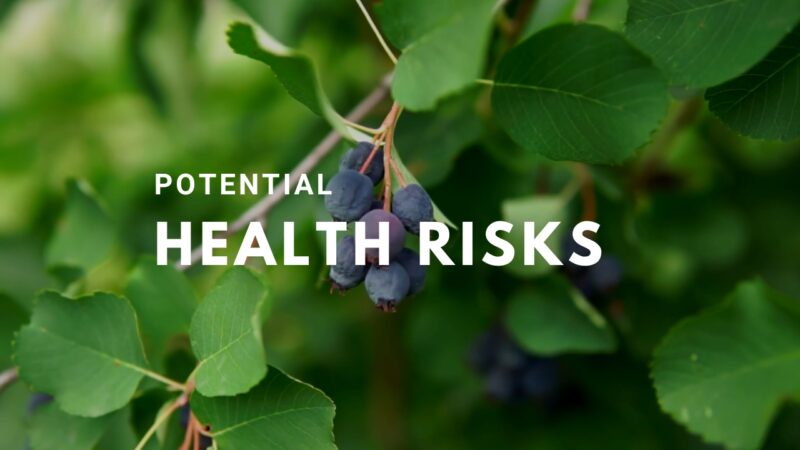
While Saskatoon berries are generally safe to consume, they can pose potential risks in certain circumstances. As mentioned earlier, their seeds contain cyanogenic glycosides. While the amount is minimal, consuming vast quantities may lead to mild gastrointestinal discomfort.
Moreover, people with specific allergies or sensitivities might experience adverse reactions. Always test a small amount if trying Saskatoon berries for the first time and be cautious if you typically experience fruit allergies.
Culinary Use
Saskatoon berries have a long history of culinary use. Their unique sweet-nutty flavor makes them a versatile ingredient in a range of dishes. They can be eaten fresh, made into jams, pies, and syrups, or even used as a topping for salads and cereals.
Indigenous people also traditionally used these berries in a type of dried food called pemmican, a mixture of berries, fat, and protein, which served as a nutrient-dense food source during long winter months.
If you’re looking to explore the delicious world of Saskatoon berries, you won’t want to miss out on trying these mouthwatering Saskatoon berry butter tarts that are sure to unleash your inner baker.
Growing Saskatoon Berries at Home
Growing Saskatoon berries at home can be a rewarding endeavor. They’re quite hardy and can tolerate a range of soil types, although they prefer slightly acidic to neutral soil.
For successful growth, ensure your Saskatoon berry plants get full sun exposure and regular watering. Harvest the berries in early summer when they’re fully ripe, signified by their deep purple-blue color.
Commercial Production
Commercial production of Saskatoon berries is a growing industry, particularly in Canada, where these berries have significant cultural value. They are also commercially grown in the United States, mainly for fresh consumption and processed food products.
As consumers continue to seek out local and nutrient-dense foods, the future looks bright for the commercial production of Saskatoon berries.
Interesting Facts About Saskatoon Berries
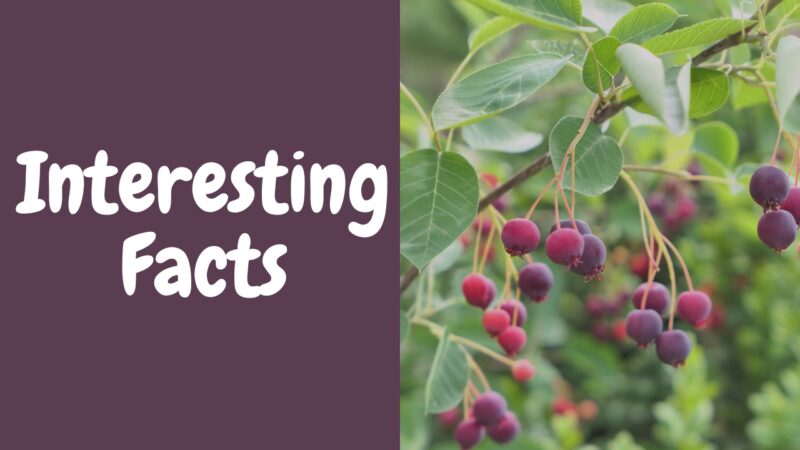
Saskatoon berries have a rich history and cultural significance. The name “Saskatoon” originates from the Cree language term for the berry, “misâskwatômina.”
These berries are not only edible but have also served cultural and spiritual purposes in various indigenous ceremonies. Today, the Saskatoon berry festival held annually in Saskatoon, Saskatchewan, celebrates this humble berry’s cultural significance.
Myths and Misconceptions
While Saskatoon berries are entirely safe to eat, myths and misconceptions can lead to unnecessary fear. Some people mistake them for similar-looking poisonous berries, causing them to avoid this nutritious fruit.
One such myth is the belief that all small, wild berries are poisonous, a misconception that could prevent individuals from enjoying Saskatoon berries and their health benefits.
Saskatoon Berries versus Blueberries
One question often arises when discussing Saskatoon berries – how do they compare to blueberries? Both have a similar appearance and offer numerous health benefits, but there are subtle differences to explore.
Saskatoon berries and blueberries are both excellent sources of nutrients and antioxidants. However, Saskatoon berries generally have higher fiber content and more protein and provide more certain minerals, such as calcium and manganese. The flavor of Saskatoon berries is slightly more nutty and less tart compared to blueberries, giving them a unique taste profile.
Traditional Uses
Saskatoon berries were more than just a food source for indigenous people; they were used for a variety of practical purposes. From medicinal remedies to dye production, let’s delve into the traditional uses of these versatile berries.
The juice of Saskatoon berries was often used to dye cloth and leather. They were also used in traditional medicines to treat a range of ailments, such as digestive problems and eye infections. It’s fascinating to consider how this humble berry played such a significant role in indigenous cultures.
Preserving Saskatoon Berries
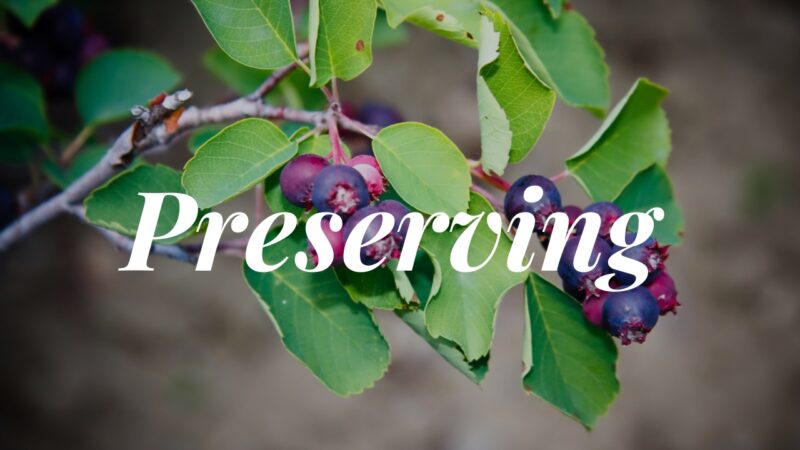
If you’re fortunate enough to have a bounty of Saskatoon berries, you might wonder how best to preserve them. Fortunately, these berries lend themselves well to numerous preservation methods, allowing you to enjoy their delightful taste year-round.
Freezing Saskatoon berries is a common and simple method of preservation. Ensure the berries are ripe, wash them thoroughly, let them dry, then freeze them on a flat tray before transferring them into a freezer-safe container. Another popular method is canning or making preserves, which often enhances the berries’ natural sweetness.
Indulge in a culinary delight by pairing a succulent pork tenderloin with a delectable Saskatoon sauce that will elevate your taste buds to new heights.
Closing Thoughts
Saskatoon berries, with their captivating taste, impressive nutrient profile, and fascinating history, are certainly worth a try. While their seeds contain cyanogenic glycosides, the amount is too minuscule to cause harm unless consumed in exceedingly large quantities.
The next time you see these delightful berries, whether in the supermarket, a farmer’s market, or the wild, give them a try. Their unique flavor and numerous health benefits make them a fantastic addition to any diet.
When it comes to incorporating Saskatoon berries into your dog’s diet, it’s crucial to seek guidance from a trusted veterinarian to ensure your furry friend’s safety and well-being.


